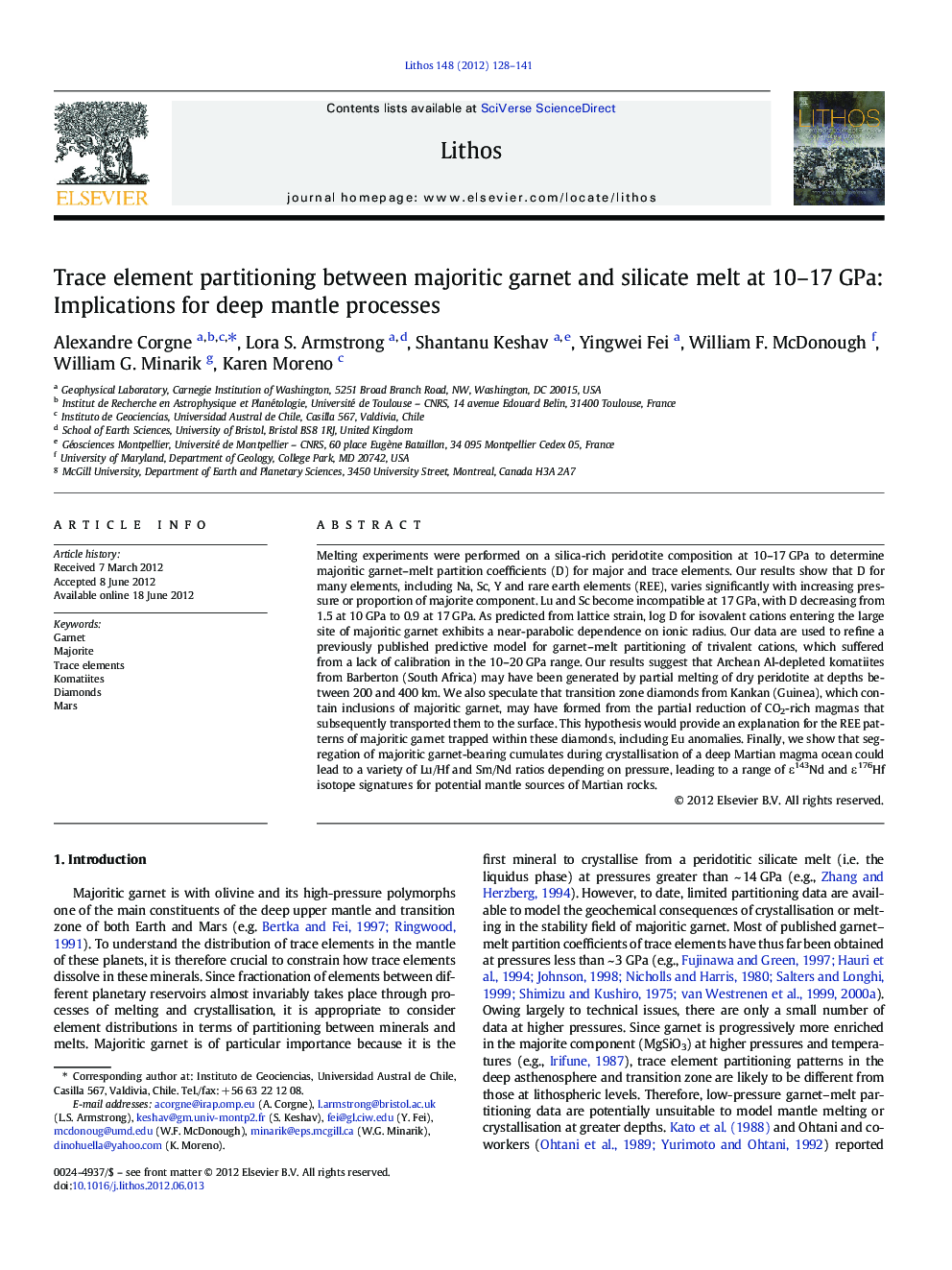| Article ID | Journal | Published Year | Pages | File Type |
|---|---|---|---|---|
| 4716547 | Lithos | 2012 | 14 Pages |
Melting experiments were performed on a silica-rich peridotite composition at 10–17 GPa to determine majoritic garnet–melt partition coefficients (D) for major and trace elements. Our results show that D for many elements, including Na, Sc, Y and rare earth elements (REE), varies significantly with increasing pressure or proportion of majorite component. Lu and Sc become incompatible at 17 GPa, with D decreasing from 1.5 at 10 GPa to 0.9 at 17 GPa. As predicted from lattice strain, log D for isovalent cations entering the large site of majoritic garnet exhibits a near-parabolic dependence on ionic radius. Our data are used to refine a previously published predictive model for garnet–melt partitioning of trivalent cations, which suffered from a lack of calibration in the 10–20 GPa range. Our results suggest that Archean Al-depleted komatiites from Barberton (South Africa) may have been generated by partial melting of dry peridotite at depths between 200 and 400 km. We also speculate that transition zone diamonds from Kankan (Guinea), which contain inclusions of majoritic garnet, may have formed from the partial reduction of CO2-rich magmas that subsequently transported them to the surface. This hypothesis would provide an explanation for the REE patterns of majoritic garnet trapped within these diamonds, including Eu anomalies. Finally, we show that segregation of majoritic garnet-bearing cumulates during crystallisation of a deep Martian magma ocean could lead to a variety of Lu/Hf and Sm/Nd ratios depending on pressure, leading to a range of ε143Nd and ε176Hf isotope signatures for potential mantle sources of Martian rocks.
► Majoritic garnet–melt partitioning of trace elements was determined at 10–17 GPa. ► We constrain the influence of lattice strain, pressure and composition. ► We propose a refined predictive model for the partitioning of trivalent cations. ► We discuss the origin of some Archean komatiites and transition zone diamonds. ► We discuss the chemical consequences of magma ocean crystallisation on Mars.
